Introduction
Every cell in our body goes through a series of events, named cell cycle. This cell cycle leads to its growth, division and duplication in order to produce two daughter cells. In eukaryotic cells (cell with a nucleus), the cell cycle are divided into two main periods: interphase and mitotic (M) phase. During interphase, the cell undergo three phases, i.e. G1 (first gap), S (synthesis) and G2 (second gap) where the cell grows, accumulating nutrients needed for mitosis, preparing it for cell division and duplicating the mitotic phase, the cell splits itself into two distinct daughter cells followed by cytokinesis where the new cell is completely divided. Besides, the cell may also temporarily or permanently leave the cell cycle and enter G0 (resting) phase to stop dividing for some reason.
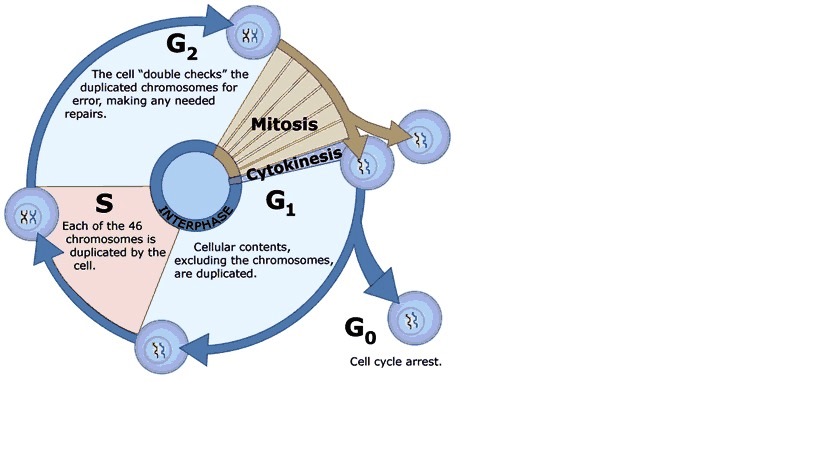
Figure 1 : Cell cycle
|
Phase
|
Phase name
|
Abbreviation
|
Details
|
|---|---|---|---|
| Resting phase |
Gap 0
|
G 0
|
The cell may temporarily or permanently leave the cell cycle and enter the G0 (resting) phase to stop dividing for some reason |
| Interphase |
Gap 1
|
G1
|
Cells size increased |
|
Synthesis
|
S
|
Duplication of DNA | |
|
Gap 2
|
G2
|
Cells continue to grow | |
| Cell division |
Mitosis
|
M
|
Cell growth stops at this stage and cellular energy is focused on the previous division into two daughter cells. A checkpoint in the middle of mitosis (metaphase checkpoint) ensures that the cell is ready to complete cell division |
Mitosis is a part of the cell cycle in which chromosomes in a cell nucleus are separated into two identical sets of chromosomes. These sets of chromosomes are sitting in its own nucleus. There are two periods in mitosis; karyokinesis and cytokinesis.
- Karyokinesis is a stage where the nucleus divides.
- Cytokinesis is a stage where cytoplasm divides together with the organelles and cell membrane. This end product of this division is the production of two new cells (with the same amount of cellular components).
Discovery
“Mitosis” process was first discovered by a German biologist in 1882, Walther Flemming. He investigated about cell division and chromosomes distribution into daughter cells. The term mitosis is taken from the Greek word (mitos) which mean “warp thread”.
Role of Mitosis
- Development and growth
Life begins from a single cell, followed by fertilized egg cells (zygotes). This process gives rise to many cells which differentiate to form tissues, organs and organ-systems of the organism.
- Cell replacement
Mitosis will produce new cells to replace parts of our body i.e. skin that have been shed off due to of normal wear, tear or injury.
- Regeneration of new cells
In some organisms that can regenerate body parts in such instances which only achieved by mitosis. For example, starfish which can regenerate lost arms directly through mitosis.
- Asexual reproduction
In some organisms which produce genetically similar offspring like in unicellular Amoeba and multicellular Hydra as well as vegetative reproduction in plants.
Phases of mitosis
There are four major phases of mitosis and each phase is used to describe what kind of change the cell is going through. The phases are prophase, metaphase, anaphase and telophase.
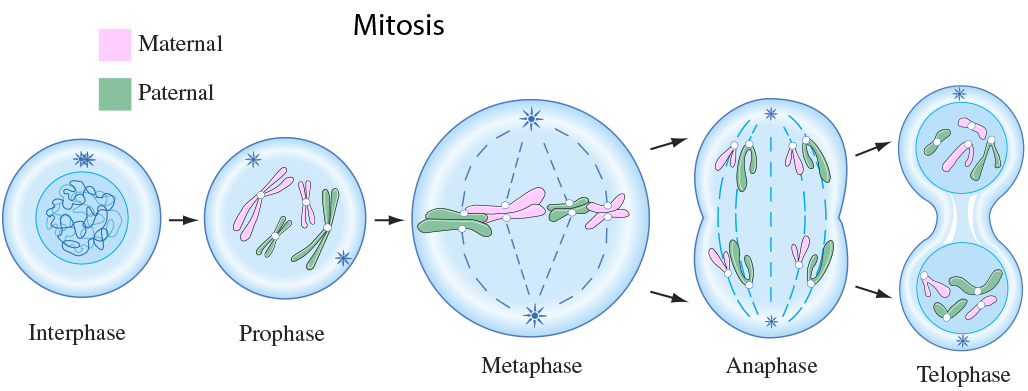
Figure 2: Mitosis
Prophase
Prophase is the first stage of mitosis. In this stage, chromosomes are at the greatest elongation. They begin to coil and become condensed. Chromosomes are then become visible and can be viewed under the light microscope. During this phase, nuclear membrane disappears and spindle fibers appear. Kinetochores hold the chromosomes and attached at the spindle fiber.
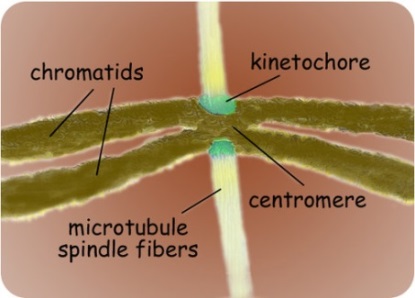
Figure 3: Prophase
Metaphase
During metaphase, the centrioles divide and move to the opposite site of the poles. The spindle fibers attach to the centromere of each pair of sister chromatids and the sister chromatids start line up at the equatorial plate, or center, of the cell.
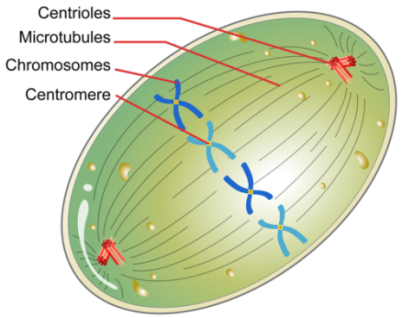
Figure 4: Metaphase
Anaphase
Centromere starts to divide longitudinally. Spindle fibers are shortening and sister chromatids are pulled to opposite poles of the cell. At this stage, sister chromatids separate. At the end of anaphase, each pole of the cell has a complete set of chromosomes.
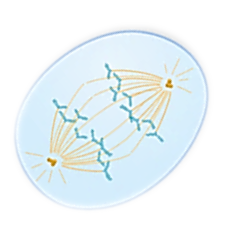
Figure 5: Anaphase
Telophase
The chromosomes uncoil and form chromatin, the nucleoli reform and nuclear membrane is reconstructed.
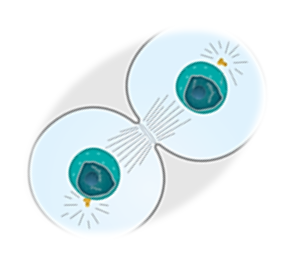
Figure 6: Telophase
Cytokinesis
Cytokinesis (cytoplasmic division) is the final stage of cell division. The end product is two genetically identical daughter cells, containing complete set of genetic material. The two daughter cells enter interphase, and the cycle is repeated.
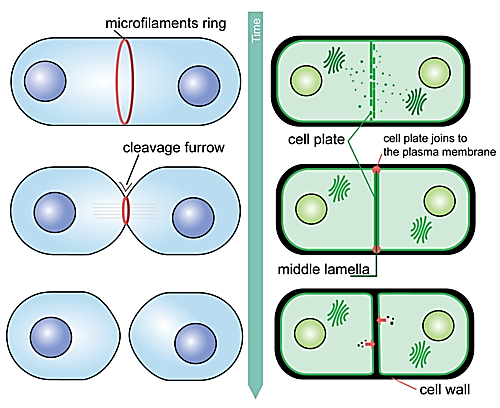
Figure 7: Cytokinesis
References
- http://www.ck12.org/api/flx/get/perma/modality/lesson/Mitosis-and-Cytokinesis/SCI.PSC.111.2?extension=version%3A48&format=html&_=1456065394560
- https://en.wikipedia.org/wiki/Cell_cycle
- https://en.wikibooks.org/wiki/An_Introduction_to_Molecular_Biology/Cell_Cycle
- https://en.wikipedia.org/wiki/Mitosis
- http://www.ck12.org/biology/Mitosis-and-Cytokinesis/lesson/Mitosis-and-Cytokinesis-BIO/
| Last Reviewed | : | 07 April 2017 |
| Writer | : | Kamalru Azman bin Daud |
| Accreditor | : | Farah Amalina bt. Mohd Zulkufli |







